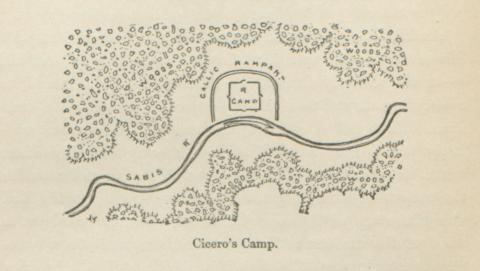Ab hāc spē repulsī Nerviī vāllō pedum X et fossā pedum XV hīberna cingunt. Haec et superiōrum annōrum cōnsuētūdine ā nōbīs cōgnōverant et quōsdam dē exercitū habēbant captīvōs ab eīs docēbantur; sed nūllā ferrāmentōrum cōpiā quae esset ad hunc ūsum idōnea, gladiīs caespitēs circumcīdere, manibus sagulīsque terram exhaurīre cogēbantur. Quā quidem ex rē hominum multitūdo cōgnōscī potuit: nam minus hōrīs tribus mīlium in circuitū III mūnītiōnem perfēcērunt; reliquīsque diēbus turrēs ad altitūdinem vāllī, falcēs testūdinēsque, quās īdem captīvī docuerant, parāre āc facere coepērunt.
English

